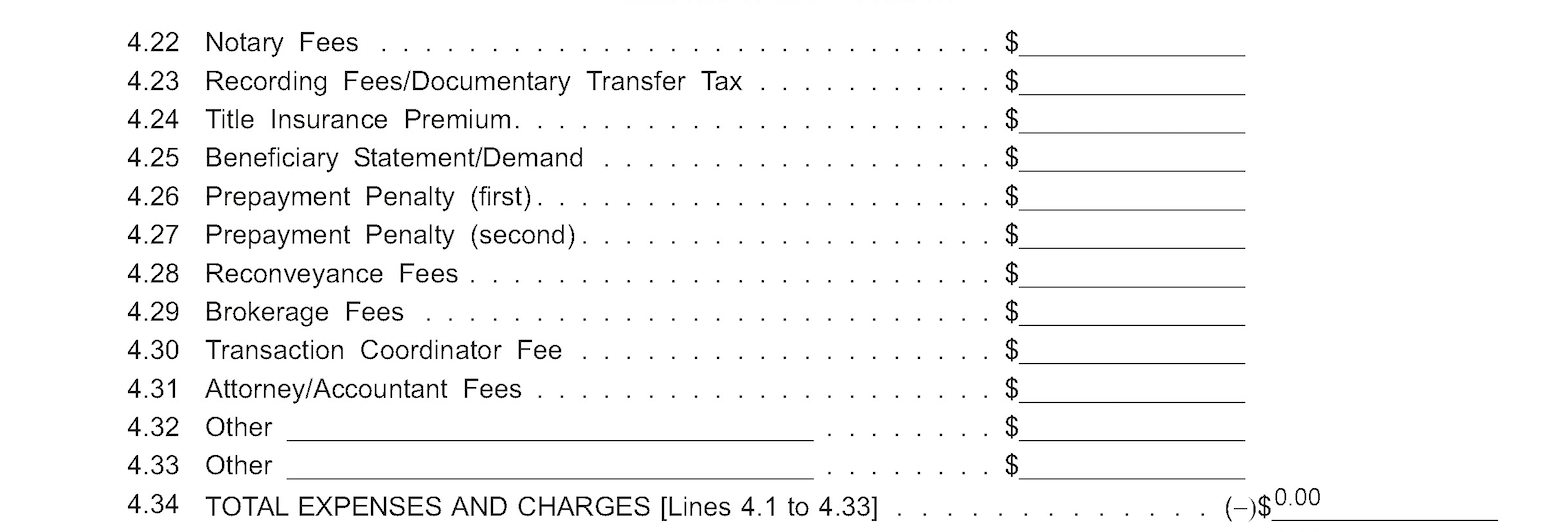Entrenched industry customs challenged
The real estate brokerage industry has been breathlessly reeling since the March 2024 National Association of Realtors (NAR®) settlement agreement prohibiting compulsory, undisclosed fee splits between sellers brokers and buyers brokers.
The questions (though already long-settled in California) swirled: Will buyers willingly pay the fee due their broker? How is a broker and their buyer to negotiate and structure the fee as part of the price? What fee disclosure is a broker to make?
Despite the perceived fog of confusion, in California, much remains the same, except at the multiple listing service (MLS) level. And when you think about it, nothing has functionally changed.
Clients and brokers have always been able to negotiate fees under the law.
In fact, any contract which establishes a licensee’s right to compensation needs to explicitly contain the following boilerplate notice in no less than 10-point boldface type:
The amount or rate of real estate commissions is not fixed by law. They are set by each broker individually and may be negotiable between the seller and broker.
Though the fee has always been negotiable under the law, it has not always been perceived as negotiable under the entrenched industry customs central to the trade union’s MLS controls.
Further, the broker’s disclosure of all fees earned, whether they derive from representing the buyer or the seller, has also been a bedrock of California law for at least 80 years. [Calif. Business and Professions Code §10176(g)]
That’s why, for four-plus decades, Realty Publications, Inc. (RPI) has had methods for the buyers broker to set their own fees like in any profession, and disclose the fee amount to their buyer clients, including when:
- a prospective buyer employs a broker using a buyer’s listing agreement form [See RPI Form 103]; and
- the buyers purchase agreement offer sets out a separate fee for the buyers agent. [See RPI Form 151]
Additionally, on the seller’s side, a broker uses a seller’s net sheet to demonstrate no part of the seller’s sales proceeds goes towards funding the buyers broker — that is a separate cost covered by the buyer in the price the buyer pays to acquire the property. [See RPI Form 310]
Related article:
Set the fee the buyer pays using a listing agreement
Brokers and their agents use an exclusive right-to-buy listing agreement to prepare and submit to prospective buyers their offer to render services on behalf of the buyer as the buyers real estate agent. Under it, a broker is employed to locate property the client seeks in exchange for the buyer’s assurance their broker will receive the agreed fee when the buyer acquires the type of property sought. [See RPI Form 103]
Without the buyer’s written promise to pay a fee, a broker is entitled to nothing when the buyer “goes around” and acquires property on which the broker provided them with information.
The amount or rate of real estate fees is not fixed by law. Instead, brokerage fees are set by each broker individually. Fees are always negotiable between client and broker, not a third party like the sellers broker. [See RPI Form 103 §4]
Clients and brokers may flexibly negotiate a fee in the form of:
- a percentage of the purchase price;
- a fixed amount; or
- an hourly rate.

Use a purchase agreement to set the agreed fee as part of the buyer’s purchase price
All “standard and customary” distortions and agency violations in fee arrangements over the past several decades are eliminated – and the buyers broker’s fee is negotiated and protected – when the buyers broker includes their fee as a provision in the purchase agreement offer signed by their buyer. Likewise, the sellers broker separately does the same with their seller. [See RPI Form 151]
Variations to a basic purchase agreement exist outside of the realm of those published by the California Association of Realtors (CAR®).
As such, a purchase agreement may be used for negotiating separate broker fees paid to each broker by their respective client. The seller pays the sellers broker, the buyer pays the buyers broker. All fees come out of the purchase price paid by the buyer. That math has always been the fact. [See RPI Form 151]
Today, a buyers agent uses the Purchase Agreement — Separate Buyer’s Agent’s Fees when preparing an offer for their buyer to purchase one-to-four unit residential property. The fee provision states the buyer pays the buyers agent’s fee as part of the purchase price. The balance of the purchase price goes to the seller. [See RPI Form 151]
The seller’s net sheet cost for fees is what their broker receives
Sellers agents, as a material disclosure to their seller, present the total cost they incur on the sale of their property. Armed with the total cost of sale, sellers are then fully aware of the net proceeds they can expect on closing. After all, this is the most pressing question sellers have.
Sellers agents have vast knowledge of the expenses which confront a seller when the agent properly markets, sells and closes escrow on a property.
The seller’s net sheet displays the seller’s bottom line for the sale of their property. Thus, a net sheet reviewed with a seller is part of every competent listing presentation or purchase agreement offer submission for the sale of property – material facts which organically arise as part of the transaction. [See RPI Form 310]
RPI’s Good Faith Estimate of Seller’s Net Sales Proceeds — On Sale of Property form contains a provision listing broker fees. [See RPI Form 310 §4.29]
Here, the sellers broker tallies only the broker fee owed to them – the sellers broker – not fees paid by the buyer to their broker as part of their purchase price of the property.

Form freedom and “free” forms
The California real estate industry has an extensive variety of boilerplate contracts for practically any contractually negotiated real estate situation. A broker is at legal liberty to use any contract they choose in their professional practice.
Other brokers, trade union associations, insurers and MLSs may not and do not enforce use of a particular form by a broker. However, they have learned to complain when antitrust customs handed down by the trade union are breached.
Though forms published by CAR® are ubiquitous, offers and other real estate transaction forms may be written on any number of other legal formats, such as those published by RPI.
Forms are either:
- mandated for use with specific content by dictate of the state legislature; or
- generic, with each publisher responsible for its content.
Examples of mandated forms include:
- the Agency Law Disclosure [See RPI Form 305];
- the Transfer Disclosure Statement (TDS) [See RPI Form 304]; and
- the Natural Hazard Disclosure (NHD) Statement. [See RPI Form 314]
Examples of generic forms include:
- purchase agreements [See RPI Forms 150 – 159];
- listing agreements [See RPI Forms 102 and 103]; and
- net sheets. [See RPI Form 310]
Mandated forms need to have the same content as set by the state legislature, no matter who publishes it. However, each publisher is responsible for the content of its own generic forms.
Further, not all forms feature the same level of quality, clarity and utility. Far from it. Nor are they all biased favoring one side – the seller – in a transaction.
RPI’s forms contain simple and generally understood language, provide risk mitigation such as a mediation provision rather than an arbitration provision, and no attorney fee provision. Critically, they are 100% legal for use by all licensees. What’s more, they are publicly available at no cost on the firsttuesday Journal.
Access the entire library of over 400 RPI forms for your professional use – FREE.
Questions on the forms’ use may be asked at editorial@firsttuesday.us. Responses will be given within two business days.














